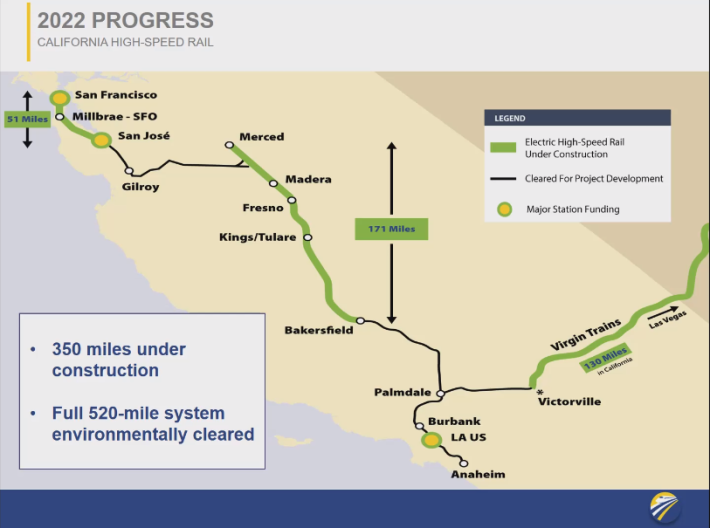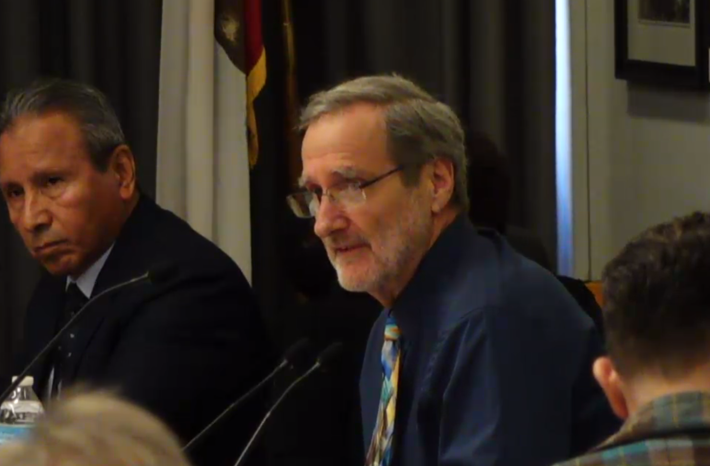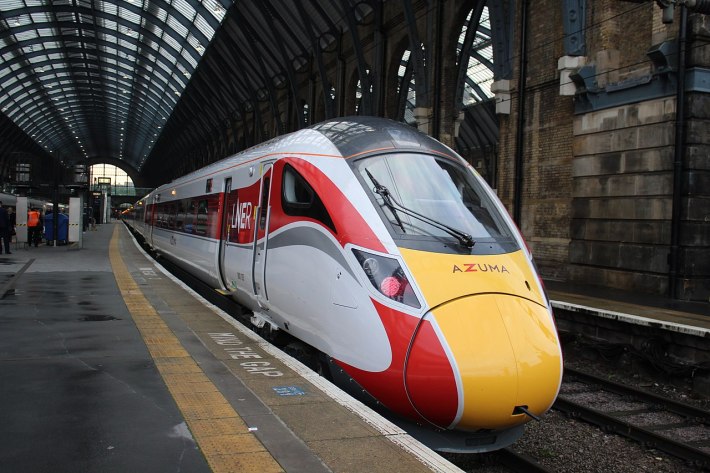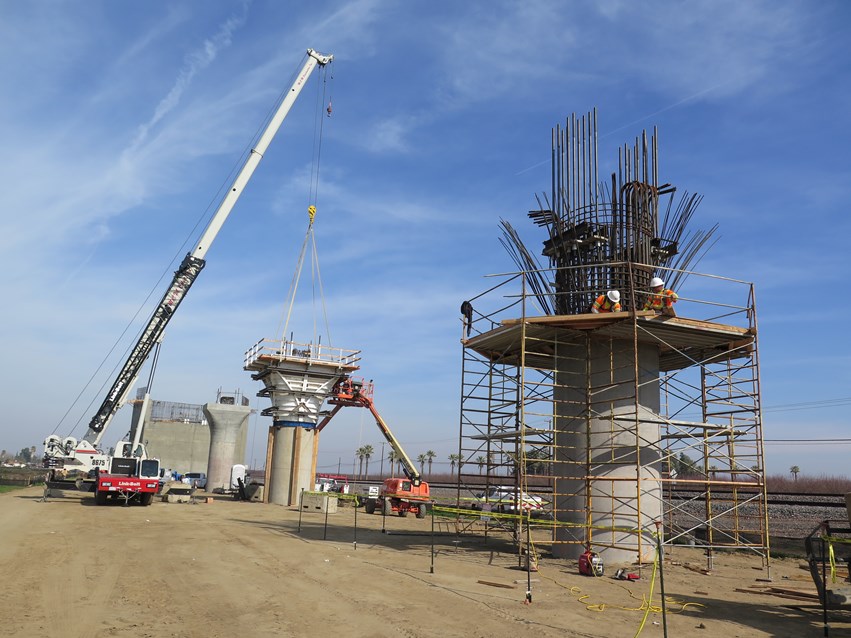Note: GJEL Accident Attorneys regularly sponsors coverage on Streetsblog San Francisco and Streetsblog California. Unless noted in the story, GJEL Accident Attorneys is not consulted for the content or editorial direction of the sponsored content.
Spending $4.8 billion on electrifying 170 miles of high-speed rail track from Bakersfield to Merced will do more to reduce pollution and take cars off the road than proposals to move those funds to rail upgrades in Los Angeles. This was the conclusion of representatives from the accounting firm KPMG and German rail operator Deutsche Bahn, presenting this morning at the California High-Speed Rail Authority (CAHSRA) board meeting in Sacramento.
"The difference in the Central Valley [investment] is far more significant," added Frank Vacca, CAHSRA Chief of Rail Operations. For example, there would be three times the reduction in car driving (and the resultant pollution) if the money goes to the Central Valley over Southern California "because of the lengths and tremendous speed increases."
The report was in response to calls from Los Angeles Assemblymembers Anthony Rendon and Laura Friedman, who represents Burbank and parts of Glendale and Los Angeles, to divert money from ongoing rail construction in the Central Valley to vague improvements to Metrolink, Southern California's commuter rail service, between Burbank, Los Angeles, and Anaheim.

Late last year, Friedman, Rendon, and members of the HSR Board itself made the argument that higher population densities in the Los Angeles region justified sacrificing electrification in the Central Valley and running 125 mph "low emission" diesel trains instead of 220-mph electric trains on the $20+ billion alignment, currently under construction.
At today's meeting, Daniel Curtin, a Board Member from Sacramento, claimed (again) that shifting funds and using diesels on the HSR alignment would be in the interest of Central Valley and Northern California residents because it would eliminate transfers.
Under the current plan, upgraded ACE commuter trains and Amtrak San Joaquins, diesel-hauled trains which generally go no faster than 80 mph and average far less, would carry passengers from San Jose, Oakland, and Sacramento to Merced, where passengers would transfer to a 220-mph, fully electrified train. However, Curtin said transferring electrification money to L.A. and using diesels on the new tracks "gets us similar or better service, and will become a one-seat ride. It’s my understanding that people will put up with longer train [rides] if they don’t have to get up and transfer."

Vacca and the representatives from KPMG and Deutsche Bahn said the "transfer penalty" was taken into account when comparing projected ridership and the relative reductions in emissions between the two scenarios.
And as Streetsblog has pointed out several times, HSR trains can run directly onto Amtrak's existing diesel lines when they are towed by a conventional locomotive. Additionally, bullet trains such as the Hitachi Azuma/Class 800, seen below in the U.K., can run on diesel or electric power. In other words, the "transfer" argument is a red herring.

"We have some of the dirtiest air in the country,” responded Central Valley board member Joaquin Arambula, “and I question the discussion to put more diesel in my air."
The Board also heard about the 2020 business plan, an updated projection of timelines and costs for the project. The plan states that the Authority will "commence testing of electrified high-speed trains by 2025 and put those trains in service by 2028-29." They will also continue designing and purchasing land for direct, dedicated high-speed connections between the Central Valley and Silicon Valley and prepare for completion of the entire, dedicated HSR plan from Anaheim to San Francisco by 2033, depending on new funds from the federal government.
From the report:
According to conventional wisdom, the State’s contribution should position California to be competitive in its pursuit of future federal funds, given the past and current federal emphasis on project sponsors bringing a significant funding match. However, until additional funding becomes available, we must continue to deliver high-speed rail on a pay-as-you-go funding approach, which means that we let contracts as funding is available. Continuing this approach indefinitely will not support the delivery of high-speed rail to California in a meaningful timeframe. Going forward, we will work with the Legislature, our federal partner, and the private sector to secure the additional funding and financing to deliver the full system and to position the project to attract private investment.
Meanwhile, the LA Times report on the business plan again claims that high-speed rail "opposition continues to grow." In reality, support for the project has hovered above fifty percent since the program was approved by the voters in 2008. Last year when opponents tried to de-fund it, they couldn't even get enough signatures to qualify their measure for the ballot. And the 35 public speakers at today's board meeting were unanimously in favor.





